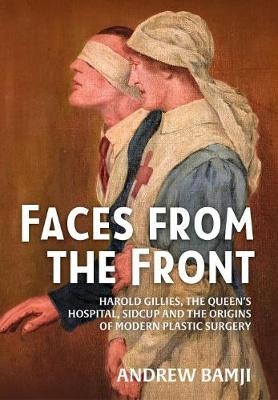
Faces from the Front
Helion & Company (Verlag)
978-1-911512-66-0 (ISBN)
- Keine Verlagsinformationen verfügbar
- Artikel merken
Faces from the Front examines the British response to the huge number of soldiers who incurred facial injuries during the First World War. These injuries were produced within a short time span, but (for the first time in a major conflict) did not necessarily lead to death due to developments in anaesthesia and improvements in the treatment of infection and blood loss. Casualties were evacuated back to England, where surgeons had an opportunity to develop their skills on a large patient caseload. Harold Gillies, an ambitious young surgeon, developed a new branch of surgery: plastic surgery of the face. In 1915, Gillies set up a dedicated ward for patients with facial injuries at the Cambridge Military Hospital in Aldershot, Hampshire. Following the Battle of the Somme and the escalation in the number of casualties with facial injuries, steps were taken to establish a new hospital entirely focused on the treatment of facial injuries at Sidcup in South-East London. The Queen's Hospital treated more than 5,000 patients between its opening in August 1917 and the mid-1920s; its work was mainly funded by charitable donations. The book uncovers the history of this hospital by analysing a wide range of sources - including numerous photographs and paintings - which detail the experiences of patients and staff.
A team of surgeons and other specialised staff were brought together at Sidcup who, like the hospital's patients, came from Britain, New Zealand, Australia, Canada and the US. The book argues that the development and refinement of new surgical techniques was helped by a multi-disciplinary approach. Detailed patient records - combined with notes, photographs and paintings - were used to evaluate the efficacy of experimental procedures and to educate new surgeons. Treatment often involved multiple operations and took place over long periods of time, and considerable thought was given to the recovery and rehabilitation of patients. The Queen's Hospital had two important legacies: first, it played a pivotal role in the development of modern medical practice by paving the way for a new surgical specialty - plastic surgery - and by showcasing the benefits of specialist hospitals and multi-disciplinary services; second, the reconstruction of damaged faces had a major impact on the patients themselves. Drawing on a unique collection of personal and family accounts of the post-war lives of patients treated at Sidcup, the author explores surgical and aesthetic outcomes and the emotional impact of facial reconstruction.
Andrew Bamji studied Medicine in London and worked as a consultant physician in rheumatology and rehabilitation at Queen Mary's Hospital, Sidcup from 1983 to 2011. As consultant archivist of the hospital from 1989 onwards, Bamji acquired the case files of the British and New Zealand Sections who worked at Sidcup during the First World War. These 2,500 files are some of the only surviving clinical records from this conflict and include surgical notes, diagrams, x-rays and watercolours. These records fuelled Bamji's interest in the history of plastic surgery and the work of the Queen's Hospital, Sidcup. His publications include 'Facial surgery: The patients' experience' in Hugh Cecil and Peter H. Liddle, Facing Armageddon: The First World War Experienced (Barnsley: Pen & Sword Books, 1996) and 'Facial surgery, rehabilitation and the impact of medical specialisation' in Peter H. Liddle (ed.), The Widening War: The Central Years of the Great War (Barnsley: Pen & Sword Books, 2016). Bamji has lectured to medical and lay audiences in the United Kingdom, the United States, France and New Zealand, and his research has informed many television programmes and exhibitions - including at the Royal College of Surgeons, the National Army Museum and the Tate Gallery.
| Erscheinungsdatum | 28.09.2017 |
|---|---|
| Zusatzinfo | 61 colour ills, 232 b/w ills, 2 tables |
| Verlagsort | Solihull |
| Sprache | englisch |
| Maße | 170 x 245 mm |
| Themenwelt | Literatur ► Biografien / Erfahrungsberichte |
| Geschichte ► Allgemeine Geschichte ► Neuzeit (bis 1918) | |
| Geschichte ► Allgemeine Geschichte ► 1918 bis 1945 | |
| Medizinische Fachgebiete ► Chirurgie ► Ästhetische und Plastische Chirurgie | |
| Studium ► Querschnittsbereiche ► Geschichte / Ethik der Medizin | |
| ISBN-10 | 1-911512-66-8 / 1911512668 |
| ISBN-13 | 978-1-911512-66-0 / 9781911512660 |
| Zustand | Neuware |
| Haben Sie eine Frage zum Produkt? |
aus dem Bereich


